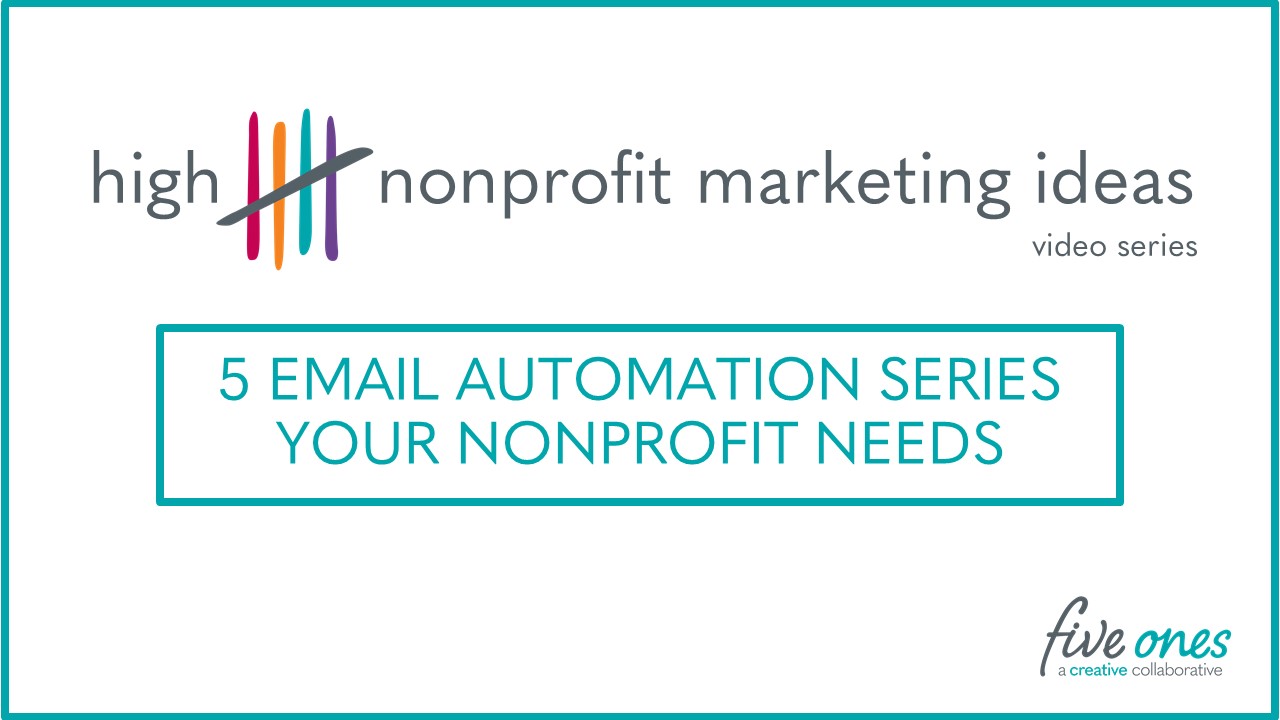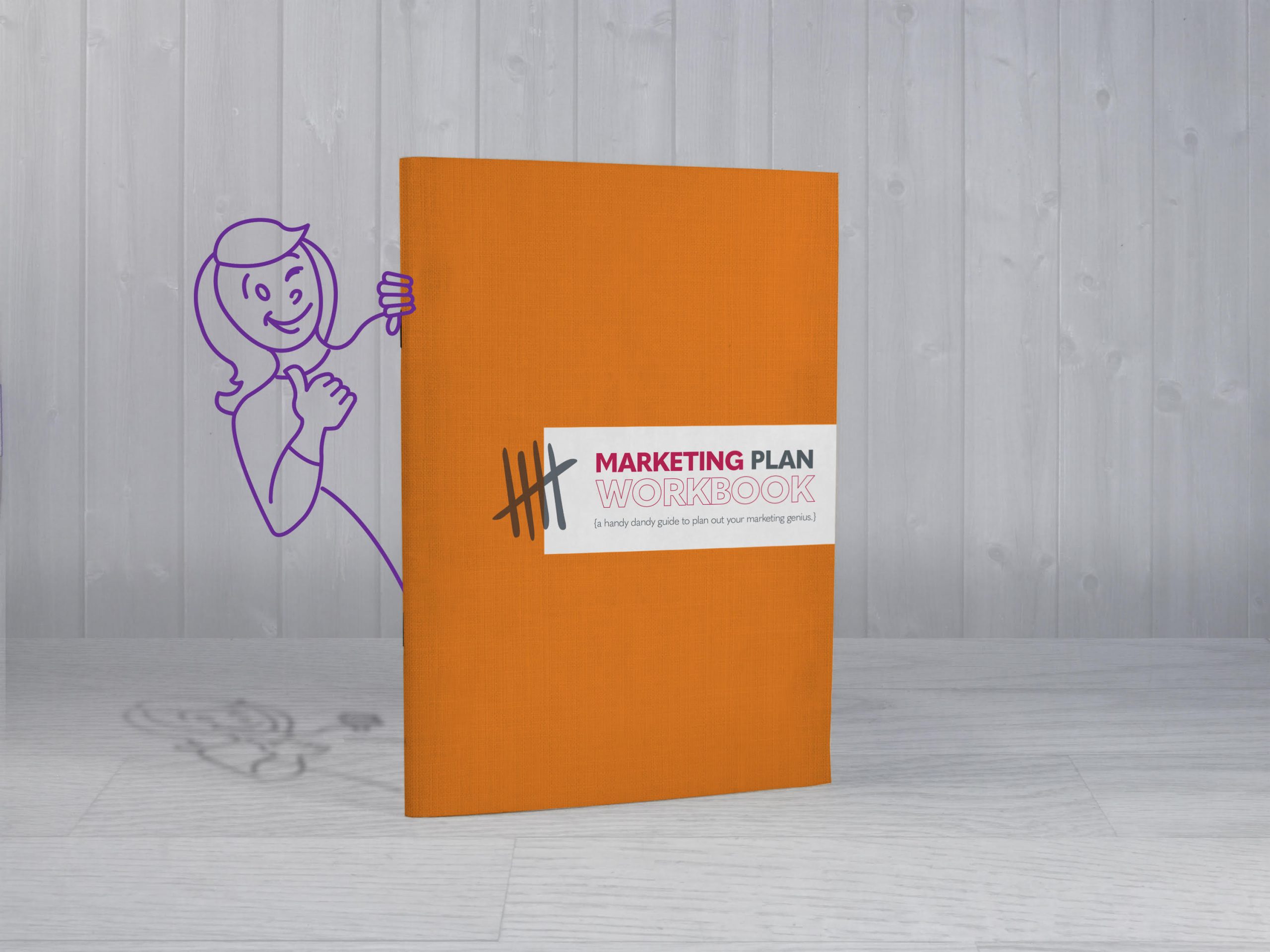
5 Automation Series Your Nonprofit Needs
The failure or success of a nonprofit depends on engagements with its stakeholders. And email is the most effective mode of engagement and marketing—it’s a way to attract new donors, keep the existing donors, and re-engage donors who seem to have forgotten or lost interest. But, who has time to weed through lists and trigger dates by hand, write and send custom emails, let alone think about how to do this consistently? (Because we all know one email is just not enough!)
If you can customize and automate some of your email outreach, you’re likely to reap considerable rewards in donor funding and engagement. Statistics show that for every 1,000 emails sent in 2019, nonprofits generated $45 in revenue. Email is an essential tool, so let’s make it work for you!
What Is Email Automation?
Email automation uses advanced AI and software to create customized and personalized emails for your target audience. (Ok, that makes it sound scary!) It’s really just a pre-programmed way of sending emails to people based on specific criteria. If you’re not familiar, check out my video that has a basic intro on email automation and some high-level ideas. The rest of this blog post will lay out more specific tips for how you can execute email automation for your nonprofit.
One of the most effective forms of email automation in nonprofit marketing is an “email series.” Creating an email series enables you to walk your target audience through a journey explaining your cause and why you would like them to be part of it.
Why You Should Consider Email Automation for Your Nonprofit
But first, there is a long list of reasons why email automation is a net positive for your donor engagement campaign. I realize that you may need some reasons why you should make the investment of time (to set up), talent (to create the emails), and money (to pay for an email client that allows for automation) if you don’t already have this set up. Nonprofits that have opted for email automation always see an increase in donor engagement and participation. Check out more stats on this in the M+R Benchmarks Study.
Some benefits of email automation, besides the cost and time savings in doing this as a “one-and-done” exercise, include:
1. Increases Donor Retention
Email automation is a tried and tested method of retaining donors and subscribers. Statistics show that the average open rates for nonprofit emails increased by 4.8% in 2019 to 17% – much of which may be led by smarter email sending through automation programs. Many donors site poor communication as the main reason for disengagement, so an email series will both keep you in touch with your donors and boost the quality of your engagement.
2. Improves Your Rapport through Personalization
Automating your email makes it easier to collect data and information that will enable you to understand and engage with potential or existing donors. With an automated email campaign, you no longer have to send one evergreen email to all your potential or existing donors. Instead, your emails target the persona of each donor, increasing the chances of conversion. (This is all done through your email system, which walks you through all of the options!)
3. Better Targeting and Segmentation
An automated email campaign enables your nonprofit to narrow its engagement to each donor’s character and preference – this could be their age, their geographic region, their interests, their interaction with your website, to name a few. Once you have segmented your donors into groups, whether it’s their level of interaction with your emails (opens/clicks) or through your knowledge of their persona, your interaction will be much more targeted and, therefore, more effective.
5 Email Series Your Nonprofit Needs
If you’re interested in email automation, here are details on the five types of series that you should consider creating and activating:
- Welcome Series
- One-time Donor Series
- Recurring Donor Series
- Re-engagement Series
- Special Day Series
Welcome Series
A welcome series is the first most crucial engagement in a nonprofit email campaign. It is the first impression your organization makes with a stakeholder (potential donor), which determines the trajectory of the relationship.
Your welcome series should:
- Seek to strengthen the relationship
- Set the ground towards future commitment
- Emphasize the values of your organization
The welcome series introduces your nonprofit to someone who has signed up to “learn more” and not necessarily donated yet. So, you can include a request for a donation, but I recommend saving that for your last email in the series as you want to create awareness and understanding first. Best practice would be to create 2-5 emails in the welcome series. Here are a few ideas you could use for your welcome series:
- Welcome the Potential Donor
Your welcome series should receive the donor into your community and make them feel part and parcel of something greater than themselves. For example:
“Welcome to our family,” “Thank you and welcome,” or “we are so thrilled to have you here.”
- Tell Them Your Story
A welcome email can shed light on your nonprofit’s background and what led to its founding or development. For example:
“Our nonprofit was started when we were traveling through the Middle East and saw how war could ravage a society.”
- Lay down the purpose
A welcome email should communicate the mission of your nonprofit organization and the goal it seeks to achieve. For example:
“We seek to help women and children in poverty gain access to healthcare and education.”
- Seek Further Engagement
Your welcome series should not only stop at welcoming your new donor but should go-ahead to seek further participation. For example:
“Somewhere down the line, we decided to let other Americans join our journey and donate to our cause. You, too, can contribute to our cause today. “
One-Time Donor Series
The second most valuable email series you can create is the one-time donor series. This series is all about the gratitude – you should seek to show appreciation for donors who have contributed for the first time to your cause and then aim to convert one-time donors into recurrent donors. You could include 2-8 emails in this series, depending on how you want to space them and how often you send regular updates/newsletters to your entire list (those evergreen messages I was mentioning that are still important!).
Here are a few tips for this series:
- Thank You Messages
Tell them thanks and offer heartfelt gratitude. For example:
“We are grateful for your contribution to our cause. Because of people like you, we are now able to spread our outreach farther.”
- Show the Impact of the Donation
One way of showing appreciation for your one-time donor is by showcasing the impact of their donation. Use numbers. Make it count. For example:
“Since you contributed, we have expanded healthcare and aid to ten thousand more refugees.”
- Make the Case for a Recurring Donation
They are already feeling compelled enough by your mission and follow-through to have donated, so help them understand how ongoing support is needed, too. For example:
“There is still more to be done. To keep creating change, consider a monthly donation to our cause and help make the world a better place.”
- Offer Public Recognition
Another way of showing recognition to your one-time donor is by giving them public credit on your website or platform. You can send an email that thanks them for their donation and informs them that their names would be on the organization website for a month. I love this donor wall!
Recurring Donor Series
Recurring donors are the heart and soul of any nonprofit organization; they regularly give, whether it be during giving holidays or yearly. Once you have a family of recurring donors, it is in your best interest to retain them because it’s easier to maintain an existing donor than to find a new one.
Your Recurring Donor Series Should include:
- Offer an insider look
The recurring donor will stay engaged and even give more (and more often) if they feel more connected to the things you and your team do to execute the vision. Give them an insider look at how you operate, or how you spread joy and hope in your daily office activities or interview the personalities behind your operations.
You could also offer up less publicized facts and figures about the work you do, including citing research (whether it’s owned or public research), or opinion pieces from your leaders.
- Impact Updates
A series to keep recurring donors engaged will always remind them of what their contributions have done since they began their journey with your cause. For example:
“Since you began contributing, we have been able to expand our charity to 10,000 more people in the past year, and we feel that it wouldn’t be possible without you.”
- Upgrade Requests
A recurring donor believes in your cause, so give them an in-depth look into one of your programs or services. In other words, get granular here. For example:
“Since you are passionate about our program in the Middle East, you can also consider giving to our program on Climate Change.”
Re-engagement Series
A re-engagement series is where you reach out to donors who have stopped showing interest or donating to the cause—this could be through tracking opens or clicks, or other engagement that you can digitally count. Your aim is to revive interest and bring them close again. This could be one of your longer series, 4-6 emails, so you don’t count someone out until you’ve exhausted your efforts. Some few ideas for your re-engagement series:
- Offer an Unsubscribe Option (or ask for feedback)
One way to re-engage your donors who may have lost interest is to give them an option of unsubscribing to your newsletter. A disengagement option often achieves the opposite result – they decide they absolutely do still want to hear from you! For example:
“We have noticed your inactivity and would like to know if you may want to unsubscribe to our newsletter.”
Note: This does seem scary at first – what if half of your list unsubscribes? On the one hand, that means you’ll have a group of people who are genuinely interested in your mission, and you can be more upfront about your needs as an organization. On the other hand, you might offer an out to people that aren’t quite ready to go. One thing you can do is to poll them about the types of things they are interested in or ask for feedback on how effective your communications have been. There are ways to keep it light and still get them to engage (click!).
- Share a Recent Milestone
Another way to re-engage inactive donors and rejuvenate interest is to share a recent achievement that your nonprofit has made. Make a splash! For example:
“We have, in the past few months, managed to reach our goal of providing food security to a thousand inner-city youth.”
Special Day Series
I call this by “Seize the Day Series” in the video above. (Or the Mike-Mike-Mike-Mike-Mike; What Day Is It, Mike? Series. I had to get a laugh in here somewhere!) Donors respond positively to outreach made on holidays or special days—days when your cause has a podium. This can be through engagement in days such as Year-End giving, Giving Tuesday, and other holidays. Create a series of 2-3 emails that start light and build to an ask for a donation, but do it quickly as you have a short window of time. If you’re focused on one day, like “World Emoji Day” (check out this fun calendar), send an email in the morning, one before bed, and then one last outreach the next day.
Here are a few tips for seizing the day through email:
- Connect the “Why” of your mission to the Specific Day
The celebration of the day creates a platform for you to tell your story and make a compelling ask. Let’s use the example of World Book Day in April. If your nonprofit provides books to kids in need, use this opportunity to create a video that shows the problem and how the solution changes lives for the better!
- Remind Donors that not Everybody is Celebrating
Use your special day series to remind the donor that even in the season of joy, not everyone is celebrating. For example:
“Take this Mother’s Day to remember those without mothers.”
- Remind the Donors the Purpose of the holiday/season
Your series should try and remind the donors of the purpose of the holidays and how they can help further that cause. For example:
“Christmas is not only the time to eat and to drink but also the season of giving.”
- Use Days that are Personal to your mission
One strategic time to engage all your donors, regardless of their status, is during your anniversary. During this month or day, you can send emails to all donors and receive positive engagements and contributions. Here’s a promotion put together by Charity: Water to celebrate their founder’s birthday. It uses his story and birthday to ask for support in a meaningful, personal way.
Now Put It All Together
Now that you have ideas for how to reach your stakeholders and what you can say don’t forget to spend time putting it all together before you program it into your email system. Your email platform will require you to set up criteria (often called triggers) and steps (if/then flows) to create your series. Think this through while you’re writing so you can personalize and string together the messages from email one to email two and so on. For example, if during your one-time donor series, someone becomes a recurring or monthly donor, you may want to send them to a second-time donor series. The possibilities are endless, but keep in mind the whole point is to keep them in your “family.” So, whatever you do, make sure you think of these series from the point of view of someone receiving an email and not just a group of robots reading email! (Think about how many times you can ask for a donation before someone would get tired of hearing it.)
I’ve set up a nifty PowerPoint template where you can plot your email series, with if/then flows. It looks a little like a sitemap with boxes and arrows. Email me if you’re interested, and I’ll send you a Google Drive link.



